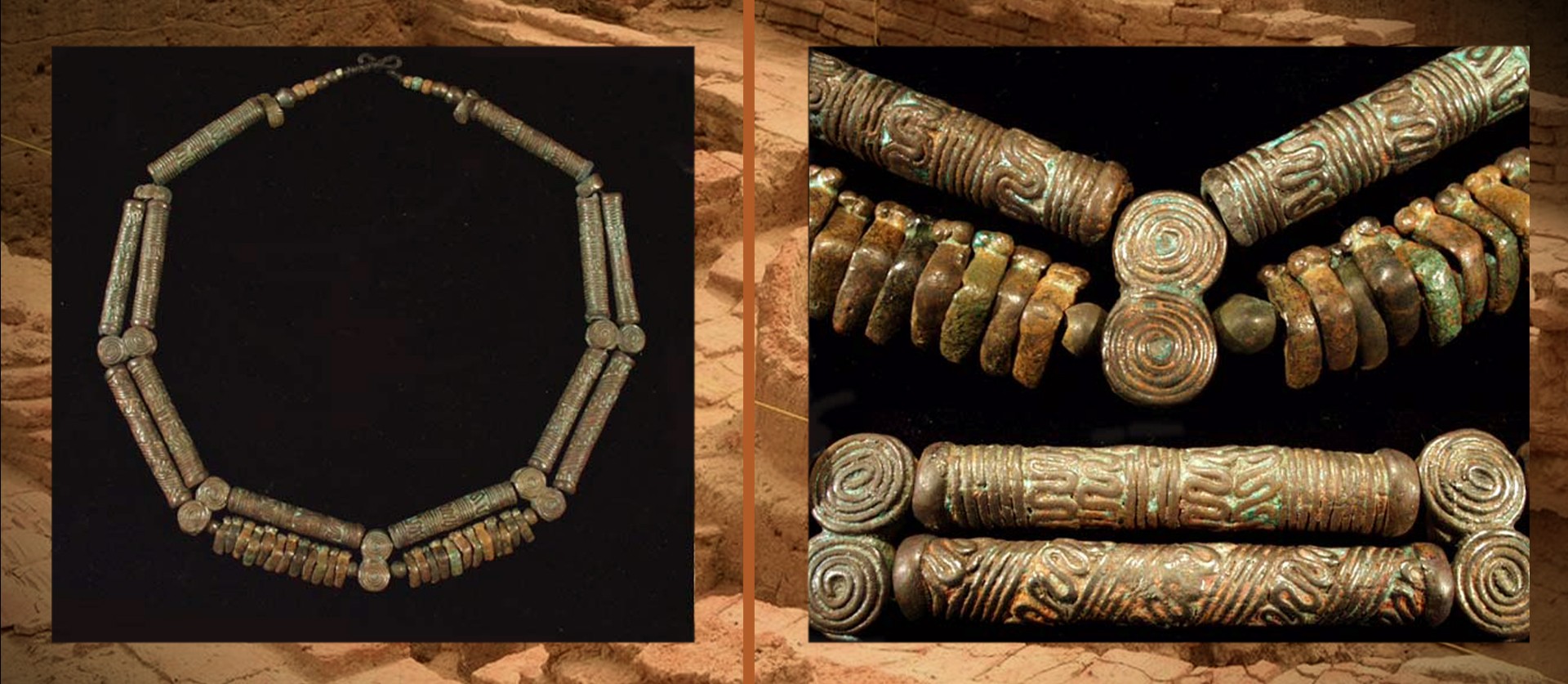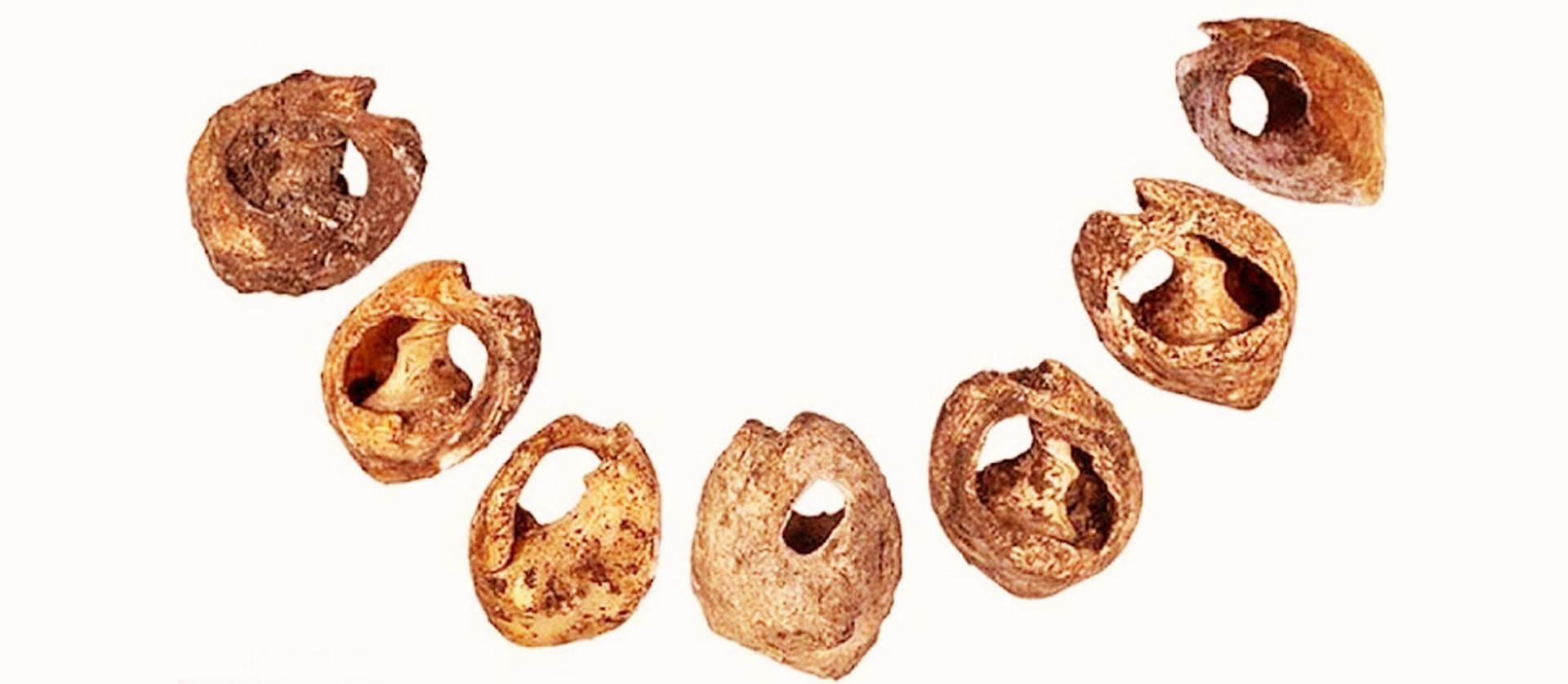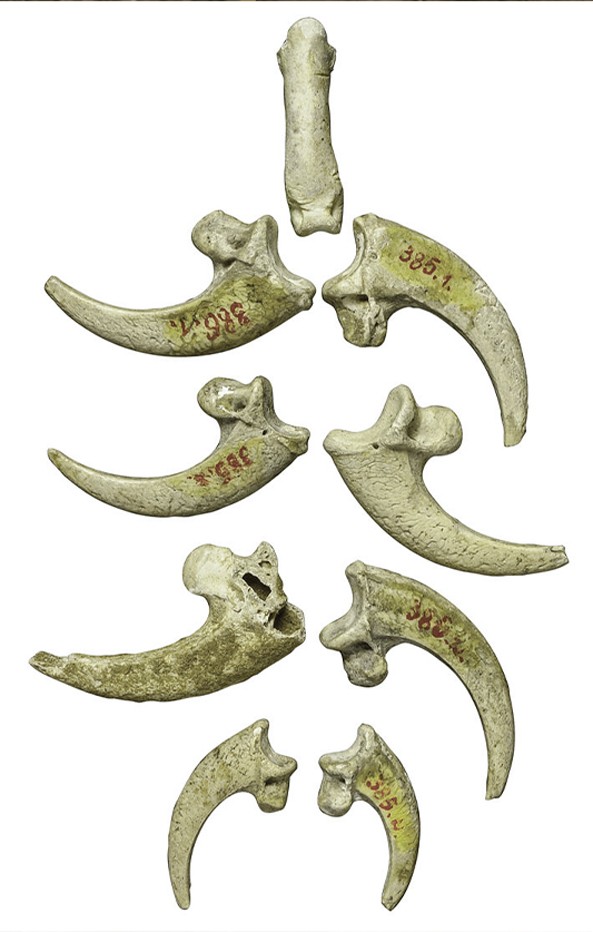Prehistoric Jewelry: how Men and Women of the Stone Age Adorned Themselves

From the very beginning of human history, our ancestors created and wore ornaments: the oldest prehistoric jewelry, in fact, dates back to the Stone Age. During that period, which spans from the Paleolithic (2 million years ago) to the Neolithic (8000-3500 BC), Homo Sapiens appeared, who discovered how to produce and control fire and created the first examples of prehistoric art. In the second era of Prehistory, the Metal Age (5000-1100 BC), humans learned to work copper, bronze and iron, a discovery that influenced the creation of jewelry and ornaments.
The World’s Oldest Prehistoric Jewelry
The Shells of Morocco
In the Bizmoune cave near Essaouira, on the Atlantic coast of Morocco, 33 shells were discovered in 2021, perforated like beads of a necklace. Based on the study by an international group of researchers, the shells date back to 142 thousand years ago and are the oldest prehistoric jewelry found so far. They show signs of craftsmanship, such as chipping and polishing done with stone tools, and signs of wear, due to the thread from which they were suspended. According to scholars, the beads and the necklace they composed are the work of artisans belonging to the Homo Sapiens species, which at that time lived only in Africa.

The Eagle Claws of Croatia
During the same period, Neanderthal man lived in Europe instead. At Krapina, in Croatia, one of the most important Neanderthal sites in Europe, eight worked eagle claws were found, dating to about 130 thousand years ago. In this case too, the craftsmanship shows that these claws were intended to be used as ornaments, probably on necklaces and bracelets. Other findings of similar eagle claws, dating to a period between 100 and 45 thousand years ago, have occurred in the caves of Azé, in France, and in the Fumane cave, north of Verona.

The Evolution of Jewelry in Prehistory
From Shells, Tusks and Bones…
As we have seen, the oldest jewelry belongs to the Paleolithic, when men and women still lived in caves. They were beginning to produce and control fire, but activities such as livestock farming and agriculture would not emerge until many thousands of years later. Even in that primitive era, therefore, jewelry and ornaments were created, which probably had an amulet function to protect hunting and survival. Humans did not yet know metals, so the materials of the first prehistoric jewelry were those easily available. Those who lived near the sea, as in the case of the cave in Morocco, or near waterways used shells, pebbles, fish bones and fish teeth. Those who lived in more inland areas used the remains of animals killed in hunting, such as horns, tusks, teeth and bones. All these objects were worked with stones to obtain mostly pendants to wear as necklaces.
… To more Elaborate Prehistoric Jewelry
In the Neolithic, the last period of the Stone Age, the first stable settlements arose around the great rivers of the Middle East (Nile, Jordan, Tigris, Euphrates). In this era, agriculture and livestock farming developed, clay pottery began to be produced, dwellings and places of worship were built, and the first commercial exchanges emerged. Prehistoric jewelry also evolved, becoming more elaborate and beginning to play a role in social status. Ornaments multiplied for every part of the body, both male and female: in addition to necklaces, bracelets for wrists and arms, anklets, rings, earrings, hair clips, buckles and brooches were created. Meanwhile, metals were beginning to be discovered, transported by rivers, which indeed marked the beginning of a new era both in human evolution and in jewelry production. Shortly thereafter, the creation of luxurious and prestigious jewelry would emerge, such as Egyptian jewelry.